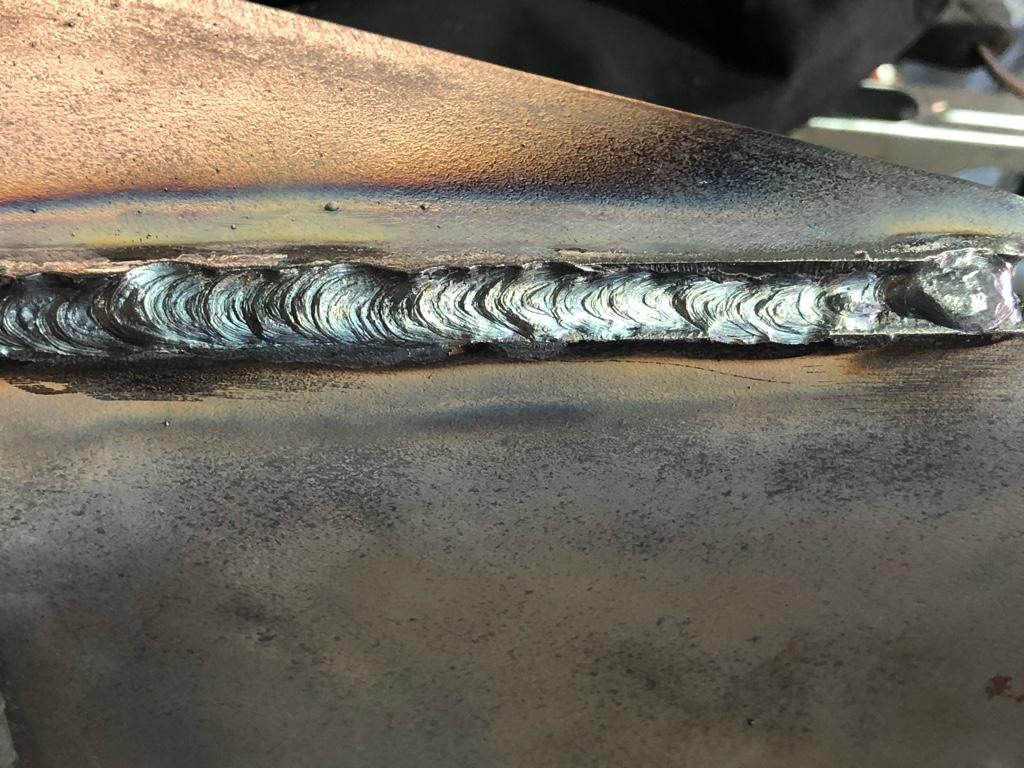Exactly How to Prevent Weld Undercut: Essential Tips for Welders
Exactly How to Prevent Weld Undercut: Essential Tips for Welders
Blog Article
Understanding the Causes and Solutions for Undercut Welding in Steel Fabrication Procedures
In the world of steel manufacture procedures, the incident of undercut welding positions a considerable difficulty that demands an extensive understanding of its causes and practical services. The elaborate interplay of various variables throughout welding operations can result in this undesirable phenomenon, influencing the architectural stability and general quality of the welded joints - Preventing weld undercut. By exploring the root triggers of undercut welding and exploring effective therapeutic procedures, producers can elevate the standard of their handiwork and make sure the production of remarkable metal components
Usual Reasons of Undercut Welding
Often overlooked in steel construction, undercut welding occurs as a result of different variables that require precise focus and proficiency to be properly alleviated. One common reason of undercut welding is extreme warmth input. When the warm input is as well high, it can result in the melting and succeeding erosion of the base product along the edges of the weld joint, developing a groove or undercut. Furthermore, inappropriate welding methods, such as making use of the wrong welding angle or travel rate, can likewise add to undercut development. Inadequate protecting gas protection is another vital variable that can result in undercutting. Inadequate gas protection falls short to protect the weld swimming pool effectively, bring about oxidation and undercut flaws. The selection of welding criteria, such as voltage, present, and wire feed rate, plays a significant role in the incident of undercut welding. Recognizing these common causes is vital for applying safety nets and making sure high-quality welds in metal construction processes.
Influence of Incorrect Welding Parameters
Unreliable welding criteria can considerably jeopardize the honesty and quality of welded joints in metal construction processes. The effect of wrong welding parameters shows up in various ways, leading to structural weaknesses and flaws in the bonded parts. Careful focus to welding parameters is critical to guarantee the production of top notch welds with the wanted mechanical properties and structural integrity.
Effect of Improper Torch Angle
Inappropriate lantern angle in welding procedures can significantly impact the quality and integrity of the last weld joints in steel manufacture procedures. The lantern angle plays a critical role in figuring out the warm input and distribution during welding. When the torch angle is incorrect, concerns such as damaging can develop. Damaging is a typical welding problem where a groove creates along the weld toe, damaging the joint and endangering its architectural stability.
A torch angle that is as well steep can bring about not enough penetration, incomplete blend, and boosted spatter. On the other hand, a torch angle that is also shallow can result in excessive infiltration, burn-through, and distortion of the base product. Preventing weld undercut. Appropriate lantern angle is crucial for making sure consistent weld top quality, stamina, and appearance
To stop damaging and various other problems triggered by incorrect lantern angles, welders have to be trained to maintain the proper torch angle throughout the welding procedure. Routine surveillance and adjustment of lantern angles throughout welding can aid accomplish sound welds with very little defects.
Duty of Inadequate Welding Techniques

An additional facet of insufficient welding methods is incorrect weld preparation. Poor cleansing of the base steels, inaccurate joint design, or insufficient side prep work can all add to undercut welding. Furthermore, inadequate securing gas insurance coverage or utilizing the wrong sort of gas can lead to incomplete blend and the development of undercut flaws.
To resolve the function of insufficient welding methods in steel manufacture processes, it is vital to provide comprehensive training for welders. Correct education on welding parameters, joint prep work, and shielding gas option can assist prevent undercut welding and make certain top notch welds in metal manufacture jobs.
Effective Solutions for Undercut Welding
Resolving undercut welding in metal construction requires carrying out effective options to enhance weld top quality and structural stability. go right here One of the main solutions to deal with undercut is to adjust welding specifications such as voltage, existing, and take a trip speed to make certain proper warm input and blend. By fine-tuning these settings, welders can protect against excessive melting of the base steel and filler product, decreasing the chance of undercut formation.
Furthermore, correct joint prep work is essential in stopping undercut. Ensuring clean base steel surface areas without pollutants and making use of the appropriate bevel angle can assist advertise far better weld penetration and decrease the threat of undercut - Preventing weld undercut. Employing appropriate welding strategies, such as oscillating the torch or weaving, can likewise help in dispersing warmth equally and filling the weld joint sufficiently, decreasing the opportunity of undercut defects
In addition, picking the correct welding consumables, directory including electrodes and filler metals, is vital in alleviating undercut. Making use of products with ideal chemical compositions and mechanical residential properties can add to attaining audio welds with marginal undercut. Routine assessment and quality assurance measures ought to also be carried out to find and attend to undercut problems immediately, making sure the general stability of produced steel elements.

Final Thought
Finally, understanding the causes and remedies for undercut welding in steel construction processes is important for achieving high-quality welds. By resolving usual reasons such as wrong welding specifications, incorrect torch angle, and poor a knockout post welding methods, welders can avoid undercutting and make certain strong, resilient welds. It is important to focus on these aspects and execute effective solutions to boost the general welding process and end product top quality.
Report this page